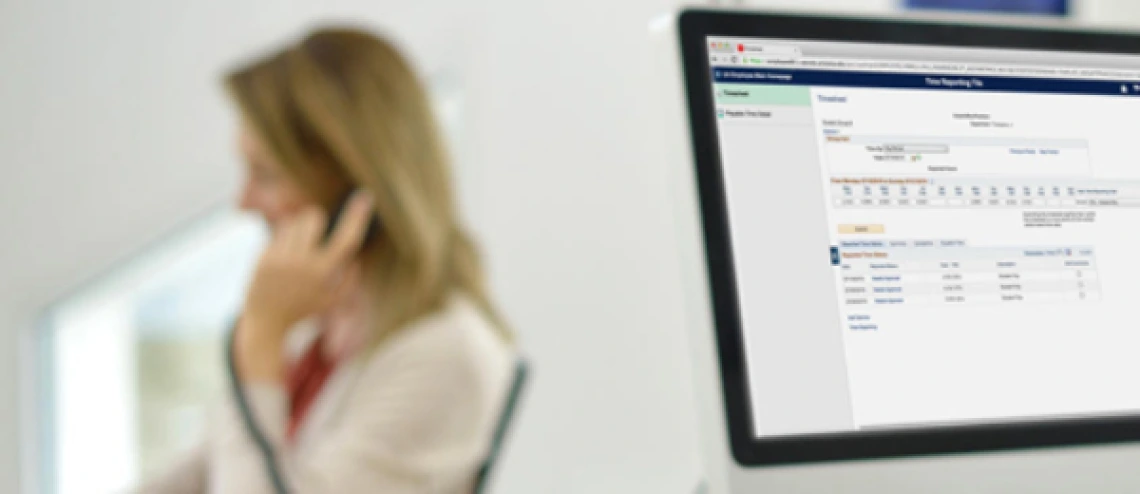Behind the Scenes with the UAccess Employee Team
UAccess Employee Behind the Scenes

Developers and business analysts on the UITS UAccess Employee team install, monitor, and coordinate changes to the university’s employee workforce system to serve university employees. It is up to this team, in collaboration with functional stakeholders and many departments across campus, to produce timely, tested modifications continuously, especially at the end of each calendar year.
Every December, the team must meet multiple deadlines for the successful January payroll and benefits to occur. There are individual changes to employee benefit election, group benefit changes such as when a new vendor is selected, or a change to the benefit vendor’s file specifications that requires a new interface between their system and our system.
The UAccess Employee team is responsible for collaborating with business stakeholders and making benefit modifications through a careful program development (coding) process. The team has established multiple layers of testing to the UAccess Employee system before any modifications can be put into production. Testing includes developers who make sure the new code doesn’t corrupt current code; business analysts who know how the application should function for the particular business need; and end-user acceptance testing. As testing progresses, there is a lot of collaboration and modifications that become a cyclical process to ensure the changes are accurate and accepted by stakeholders.
Once development and testing is complete, the benefit changes are processed to ADOA—our State of Arizona benefit provider—who then passes the changes to the benefit providers. This same cyclical development and testing process is used for ALL modifications to the employee workforce system.
Tim Schwab, Administrative Technologies Executive Director, has high praise for his team as they meet their goals in service to multiple business stakeholders across the university. “I am very proud and appreciative of the UAccess Employee Team. They continue to deliver immense value-add across the university with their high-level of delivery, dedication and long hours—especially at the end of the year and over holiday closure.”
There are over 17 unique vendor software integrations into the employee workforce system that the UAccess Employee team must error check whenever a change is being implemented. Benefits is just one integration area. Retirement, insurance, payroll, applicant tracking, international employee portal, each have unique coding and integration needs. UAccess Student, UAccess Learning, UAccess Financials, UAccess Analytics all connect to employee data for other things like bookstore purchases and parking payroll deductions.
2020 Changes
Every year is a little different—never routine. The UAccess Employee team had several layers of unique changes converging on the start of the new 2020 year. As with every January, there were new State and Federal regulatory changes, such as tax updates, a new W4 form, a minimum wage increase, and changes to how FSLA gets calculated. All these changes required the UAccess Employee team’s attention, collaboration with stakeholders and multi-layered testing process to be complete for January payroll. In addition, there were new applications being implemented for background check, employee tracking, and new compliance training system all needing to be developed and tested before put into production.
Putting all these end-of-year modifications aside, the UAccess Employee team had the largest reconfiguration of the employee workforce system since its creation due to the University Career Architecture Placement (UCAP) initiative.
UCAP was epic for university human resources and employees. It was also an epic reconfiguration of the system’s pay groups and new code values that drive recordkeeping, payroll cycles, payroll calendar and benefit calculations. The new configurations that were required for implementation of UCAP’s new staffing structure flow all the way up through the system with the potential of affecting almost everything in it.
To reduce the margin for error, the UAccess Employee team created separate environments that were duplicates of the live system. They continued to support production on the workforce system while they replicated and tested the changes brought about by UCAP on the duplicate system. As with all changes, there was multiple layers of testing and development to ensure the coding would work properly when the university converted to UCAP. These configuration changes and the coding for conversion took place over months of development and testing cycles.
Once the basic configurations were changed in the system, the team coordinated with the Division of Human Resources to implement a new set of job codes, positions, and job records, using the new positions in the reconfigured (duplicate) UAccess Employee system. The team developed custom processes to implement and run the conversion into production. All this development and multi-layered testing was done in time to meet the January 26 deadline for UCAP go-live. Lots of collaboration with other teams across campus was necessary to make these changes.
When December 31, 2019 happened, the UAccess Employee team had met their objectives on these many end-of-year projects so university employees could receive January payroll and benefits as expected, and the UCAP conversion was a success.

